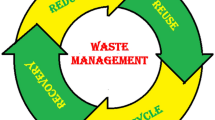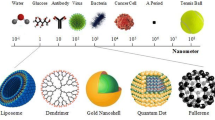Abstract
Nanoparticles, or particles in size of 1–100 nm, are extensively used in the world in different applications. For instance, single-walled carbon nanotubes (SWCNTs) are commonly used in consumer products, such as biosensors, drug and vaccine delivery transporters, and novel biomaterials. Although nanoparticles do not cause safety concerns to consumers who use nanoparticle-containing products, these small particles are potentially harmful for workers who produce them in factories or in cases of discharge to aquatic ecosystems. SWCNTs do not have a natural analogue, so the effects on health of their disposal remain largely unknown. In this study, we evaluated the effects of SWCNTs on a population of the green microalga Chromochloris zofingiensis and the profile and production of pigments and fatty acids. The alga was incubated with SWCNTs for 6 days in 0 (control), 40, 80, 160, or 320 mg/L concentrations. SWCNTs showed both positive and negative effects on the growth of C. zofingiensis, with a biomass enhancement at low levels (40–160 mg/L) but inhibition at high levels (320 mg/L). By contrast, a decreased accumulation of fatty acids and pigments of C. zofingiensis was observed over the range of the tested concentrations. These results indicate that the markers on the inhibitive toxicity of SWCNTs are increasingly sensitive in the following order: biomass and fatty acids < primary carotenoids < chlorophylls < secondary carotenoids. C. zofingiensis is a suitable microalga for evaluating the ecotoxicological hazards of SWCNTs, especially in terms of pigmentation response.
Similar content being viewed by others
References
Ali S S, Hardt J I, Quick K L, Kim-Han J S, Erlanger B F, Huang T T, Epstein C J, Dugan L L. 2004. A biologically effective fullerene (C-60) derivative with superoxide dismutase mimetic properties. Free Radical Biol. Med., 37: 1 191–1 202.
Alvarez P J, Colvin V, Lead J, Stone V. 2009. Research priorities to advance eco-responsible nanotechnology. ACS Nano., 3: 1 616–1 619.
Bar E, Rise M, Vishkautsan M, Arad S. 1995. Pigments and structural changes in Chlorella zofingiensis upon light and nitrogen stress. J. Plant Physiol. 146: 527–534.
Baroli I, Do A D, Yamane T, Niyogi K K. 2003. Zeaxanthin accumulation in the absence of a functional xanthophylls cycle protects Chlamydomonas reinhardtii from photooxidative stress. Plant Cell, 15: 992–1 008.
Cañas J E, Long M, Nations S, Vadan R, Dai L, Luo M, Ambikapathi R, Lee E H, Olszyk D. 2008. Effects of functionalized and nonfunctionalized single-walled carbon nanotubes on root elongation of select crop species. Environ. Toxicol. Chem., 27: 1 922–1 931.
Chen F, Johns M R. 1991. Effect of C/N ratio and aeration on the fatty acid composition of heterotrophic Chlorella sorokiniana. J. Appl. Phycol., 3: 203–209.
Christie W W. 2003. Lipid analysis: isolation, separation, identification, and structural analysis of lipids. Third edn., The Oily Press, Bridgwater, England. 352p.
de-Bashan L E, Antoun H, Bashan Y. 2005. Cultivation factors and population size control uptake of nitrogen by the microalgae Chlorella vulgaris when interacting with the microalgae growth-promoting bacterium Azospirillum brasilense. FEMS Microbiol. Ecol., 54: 197–203.
de-Bashan L E, Bashan Y, Moreno M, Lebsky V K, Bustillos J J. 2002. Increased pigment and lipid content, lipid variety, and cell and population size of the microalgae Chlorella spp. when co-immobilized in alginate beads with the microalgae-growth-promoting bacterium Azospirillum brasilenses. Can. J. Microbiol., 48: 514–521.
Ding L H, Stilwell J, Zhang T T, Elboudwarej O, Jiang H J, Selegue J P, Cooke P A, Gray J W, Chen F Q F. 2005. Molecular characterization of the cytotoxic mechanism of multiwall carbon nanotubes and nano-onions on human skin fibroblast. Nano. Lett., 5: 2 448–2 464.
Geslin C, Llanos J, Prieur D, Jeanthon C. 2001. The manganese and iron superoxide dismutases protect Escherichia coli from heavy metal toxicity. Res. Microbiol., 152: 901–905.
Gonzalez L E, Bashan Y. 2000. Increased growth of the microalga Chlorella vulgaris when coimmobilized and cocultured in alginate beads with the plant growthpromoting bacterium Azospirillum brasilense. Appl. Environ. Microb., 66: 1 527–1 531.
Hyung H, Fortner J D, Hughes J B, Kim J H. 2007. Natural organic matter stabilizes carbon nanotubes in the aqueous phase. Environ. Sci. Technol., 41: 179–184.
Ip P F, Chen F. 2005. Employment of reactive oxygen species to enhance astaxanthin formation in Chlorella zofingiensis in heterotrophic culture. Process Biochem., 40: 3 491–3 496.
Ip P F, Wong K H, Chen F. 2004. Enhanced production of astaxanthin by the green microalga Chlorella zofingiensis in mixotrophic culture. Process Biochem., 39: 1 761–1 766.
Khodakovskaya M, Dervishi E, Mahmood M, Xu Y, Li Z R, Watanabe F, Biris A S. 2009. Carbon nanotubes are able to penetrate plant seed coat and dramatically affect seed germination and plant growth. ACS Nano., 3: 3 221–3 227.
Klaine S J, Alvarez P J J, Batley G E, Fernandes T F, Handy R D, Lyon D Y, Mahendra S, McLaughlin M J, Lead J R. 2008. Nanomaterials in the environment: behavior, fate, bioavailability, and effects. Environ. Toxicol. Chem., 27: 1 825–1 851.
Kuhl A, Lorenzen H. 1964. Handling and culturing of Chlorella. In: Prescott D M ed. Methods in Cell Physiology. Academic Press, New York and London. p.152–187.
Lebeau T, Robert J M. 2006. Biotechnology of immobilized microalgae: a culture technique for the future? In: Rao S ed. Algal Cultures, Analogues of Blooms and Applications. Science Publishers, Enfield, N H. p.801–837.
Lekas D. 2005. Analysis of nanotechnology from an industrial ecology perspective. Part II: Substance flow analysis of carbon nanotubes. Project on emerging nanotechnologies report. Woodrow Wilson International Centre for Scholars, Washington DC.
Manna S K, Sarkar S, Barr J, Wise K, Barrera E V, Jejelowo O, Rice-Ficht A C, Ramesh G T. 2005. Single-walled carbon nanotube induces oxidative stress and activates nuclear transcription factor-kappa B in human keratinocytes. Nano. Lett., 5: 1 676–1 684.
Rogers N J, Franklin N M, Apte S C, Batley G E, Angel B M, Lead J R, Baalousha M. 2010. Physico-chemical behaviour and algal toxicity of nanoparticulate CeO2 in freshwater. Environ. Chem., 7: 50–60.
Salvetat J P, Briggs G A D, Bonard J M, Bacsa R R, Kulik A J, Stockli T, Burnham N A, Forro L. 1999. Elastic and shear moduli of single-walled carbon nanotube ropes. Phys. ReV. Lett., 82: 944–947.
Sayes C M, Liang F, Hudson J L, Mendez J, Guo W H, Beach J M, Moore V C, Doyle C D, West J L, Billups W E, Ausman K D, Colvin V L. 2006. Functionalization density dependence of single-walled carbon nanotubes cytotoxicity in vitro. Toxicol. Lett., 161: 135–142.
Tang Y J J, Ashcroft J M, Chen D, Min G W, Kim C H, Murkhejee B, Larabell C, Keasling J D, Chen F Q F. 2007. Charge-associated effects of fullerene derivatives on microbial structural integrity and central metabolism. Nano. Lett., 7: 754–760.
Wang X L, Lu J L, Xing B S. 2008. Sorption of organic contaminants by carbon nanotubes: influence of adsorbed organic matter. Environ. Sci. Technol., 42: 3 207–3 212.
Warheit D B, Laurence B R, Reed K L, Roach D H, Reynolds G A M, Webb T R. 2004. Comparative pulmonary toxicity assessment of single-wall carbon nanotubes in rats. Toxicol. Sci., 77: 117–125.
Author information
Authors and Affiliations
Corresponding author
Additional information
Supported by the National Natural Science Foundation of China (No. 50904051), the Science and Technology Planning Project of Yantai, China (No. 2010247), and the Open Fund of Shandong Oriental Ocean Sci-Tech Co., Ltd. (No. 200803)
Rights and permissions
About this article
Cite this article
Wang, Y., Yang, K. Toxicity of single-walled carbon nanotubes on green microalga Chromochloris zofingiensis . Chin. J. Ocean. Limnol. 31, 306–311 (2013). https://doi.org/10.1007/s00343-013-2131-1
Received:
Accepted:
Published:
Issue Date:
DOI: https://doi.org/10.1007/s00343-013-2131-1




